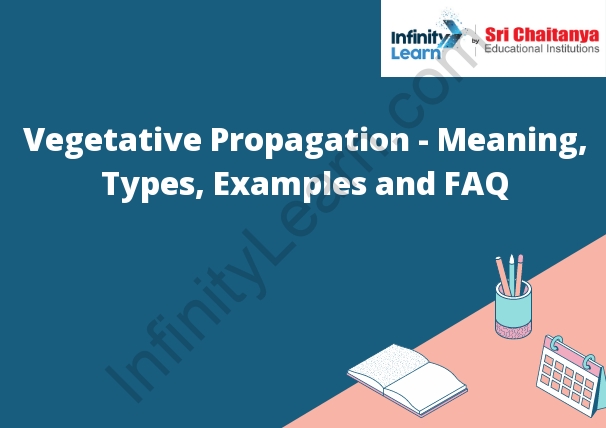Table of Contents
Explanation of Vegetative Propagation
Vegetative Propagation – Meaning: Vegetative propagation is a type of asexual reproduction in plants. It is a process in which new plants are produced from a section of the stem or root of the parent plant. The new plants are genetically identical to the parent plant. Vegetative propagation is often used to propagate plants that are difficult to propagate by other methods, such as cuttings.

What is Vegetative Propagation?
Vegetative propagation is a type of asexual reproduction in plants. It is the process of a plant creating a new plant using a part of the original plant. This can include stems, roots, leaves, or buds.
Types of Vegetative Propagation
There are a few different types of vegetative propagation: rooting cuttings, division, layering, and bulbils.
- Rooting cuttings is when a piece of the plant is cut off and then placed in water or soil in order to grow a new plant.
- Division is when a plant is cut in half and each half is then planted.
- Layering is when a branch of the plant is bent down to the ground and then covered in soil.
- Bulbils are small bulbs that grow on the stem of the plant.
Natural Vegetative Propagation
Natural vegetative propagation is the process by which new plants are formed from a part of an existing plant. The new plants are genetically identical to the parent plant. This process can occur through rhizomes, runners, stolons, bulbs, corms, and tubers.
Artificial Vegetative Propagation
Artificial vegetative propagation is a technique used to propagate plants by taking a cutting from an existing plant and placing it in a suitable growing medium. The cutting is then left to grow into a new plant.
What is Vegetative Propagation, and how does it work?
Vegetative propagation is a form of asexual reproduction in plants. It occurs when a part of the plant such as a stem or root produces a new plant. This new plant is genetically identical to the parent plant. Vegetative propagation can be done by rooting a stem cutting, rooting a piece of root, or by dividing a plant.
Vegetative Propagation Types
There are three types of vegetative propagation: layering, division, and rooting cuttings.
- Layering is a process where a stem is bent down to the ground and the tip is covered in soil. The stem is then left in place for a period of time so that new roots will form. Once new roots have formed, the stem can be cut from the parent plant and replanted.
- Division is a process where a plant is divided into two or more parts. Each part will then grow into a new plant.
- Rooting cuttings is a process where a stem is cut from a plant and the cut end is placed in water or soil. The stem will then grow new roots and can be replanted.
Propagation of Plants in the Natural Environment
Plants propagate in the natural environment through seeds, spores, and vegetative growth.
- Seeds are the reproductive structures of plants that contain an embryo and food reserves. Seeds are dispersed by wind, water, animals, or gravity. When the conditions are favorable, the embryo germinates and grows into a new plant.
- Spores are reproductive structures that are produced by some plants, such as ferns and mosses. Spores are dispersed by wind or water. When the conditions are favorable, the spores germinate and grow into a new plant.
- Vegetative growth is the growth of a plant from an existing part of the plant, such as a stem or leaf. Vegetative growth can occur through rooting of cuttings, layering, or division.
Propagation of Artificial Plants
There are a few different ways to propagate artificial plants.
- One way is to propagate them by taking cuttings from the mother plant. Cut a stem from the mother plant and place it in water or soil. The new plant will grow from the cutting.
- Another way to propagate artificial plants is to divide the mother plant. Dig up the mother plant and divide it into several pieces. Each piece will grow into a new plant.
- You can also propagate artificial plants by planting them in soil. Place the plant in a pot and cover the soil with mulch. The plant will grow in the soil.








